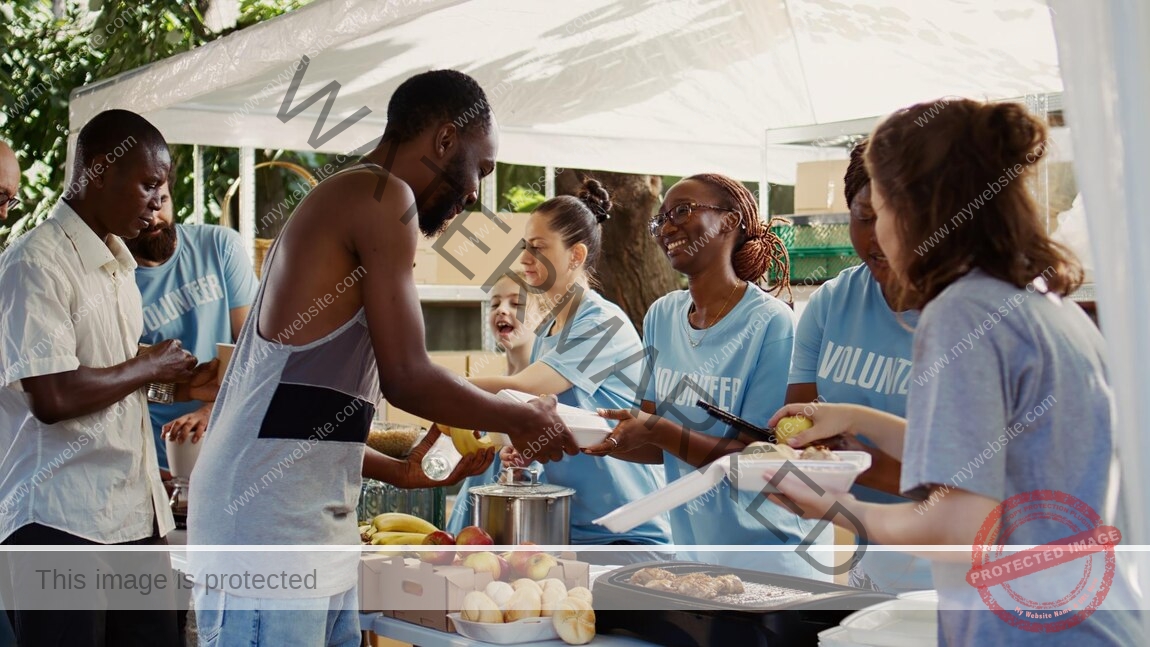Explore Harvard University’s annual food drives, an initiative dedicated to fighting hunger in the community through student and alumni participation. Also, discover community food donations and charity events at Harvard university.
With Harvard University’s vigorous efforts in providing assistance to nearby communities through annual food drives, food insecurity is emphasized as one of the major issues that needs attention every year. Harvard has been able to combat hunger, highlight and promote responsible food consumption behavior within society. They achieved this by forming alliances and implementing a systematic campus-wide food recovery cycle. As well as conducting outreach activities. Harvard University has been engaging in food drives and similar initiatives to help in providing relief to communities in need. Let us see how they achieve these goals.
Recommended article: Top 5 Late-Night Food Spots for Harvard Students
Why Food Drives Matter
According to the U.S. Department of Agriculture, more than 36.4 million people in the United States are food-insecure. This includes families, students and the elderly people within the Greater Boston region. Many people do not have steady access to healthy meals which subsequently impacts on their health. As well as their education and level of productivity. To address these conditions, food drives are initiated to seek food donations from within campuses and distribute to local agencies/food banks. Such drives are a testament of the interest Harvard posses to the welfare of the community. Also, they are in line with its wider goals of social responsibility. A goal which embraces the welfare of the environment and serving society. Also read this article to learn about charity food events and community donations at Harvard university.
The Origins of Harvard’s Food Drive Initiatives
Harvard’s food drive efforts can be traced back to high motivation for community and social responsibility. The university’s dependency dates back several decades. This was when student and faculty groups addressed the need for food in the Great Boston area. According to the PBHA, the Phillips Brooks House Association at Harvard, one of the early student groups overseas, was very active in these early endeavors. Thus, operating in collaboration with local shelters and food banks to alleviate hunger in the target area.
See also: How Harvard University’s Dining Halls Are Embracing Sustainability
With time, the initiatives were replicated to include Harvard University Dining Services (HUDS) and community partners like Food for Free. As a result of these partnerships, Harvard was able to scale its influence and moved from doing occasional food drives to establishing more formalized food recovery programs to retrieve excess dining hall food for redistribution to the hungry. Currently, Harvard’s food drive programs involve students, staff, and faculty who collaborate in a large scale. They have an organized effort to address food insecurity on the campus while promoting sustainable community-centered initiatives. For more information on charity food events and community donations at Harvard university, read this article.
Key Partnerships in Fighting Hunger
Harvard’s food drive success would not be achieved without local organizations, and Food for Free is one such organization. It is a Cambridge based non profit organization that aims at alleviating hunger through food redirection. Harvard University Dining Services (HUDS) is in partnership with Food for Free. It continuously provides these families thousands of meals weekly. These meals made with high quality and healthy ingredients are then distributed to a wide range of community centers. As well as schools, and shelters to people who may not have access to this food otherwise. This partnership helps to maintain a sustainable food system where excess food is brought to the table instead of perishing in the landfills. Continue reading this article to discover charity food events and community donations at Harvard university.
See also: The Benefits of Joining Harvard’s Health and Wellness Programs for Weight Loss
Campus-Wide Involvement: The Family Meals Program
The Family Meals Program is one of Harvard University’s food drive initiatives. It works as the foundation of most activities in this regard. This program is where HUDS gathers left-over, wrapped food from the dining halls, freezes it for safety and gives it to Food For Free for distribution. These initiatives not only avert excess food being disposed of, but they also allow community members to be fed with proper meals. Each meal consists of a carefully calculated amount of protein and mashed potatoes. As well as a spring vegetable blend, and a whole grain sandwich, so that recipients receive balanced nutrition. Students, staff, faculty and volunteers want to aid in preparing food thus amplifying the community spirit while tangibly helping out. Also, interested in Fighting hunger Harvard University? Read this article.
Engaging Students in Food Recovery
One of the most interesting features of food drives at Harvard is the active engagement of students. These students are key contributors to food recovery efforts on campus. Students take up volunteer work of packaging uneaten food which translates to the preparation of meals in the hundreds on a weekly basis. Some programs, such as Resource Efficiency Program (REP) and the Office for sustainability assist the students. Each one of these programs promotes waste minimization. They also promote a positive ecological footprint with the students, which they take with them after they graduate the college. This experience brings about an understanding of hunger in the broader sense. It also encourages such students to bring about change in the society they are in in the longer run. Want to know more on Fighting hunger Harvard University? Read this article.
See also: How to Stay Fit as a Student: Harvard University’s Wellness Programs
Harvard’s Commitment Beyond Food Drives
Apart from food drives, Harvard seeks to further its hunger-relief exploits through a number across the institution. For instance, as part of Public Service Week, students and staff volunteer at the Greater Boston Food Bank. Here, they assist in the inspection, sorting, and repacking of food and other items in donations. Such volunteering activities are done during the school semester. Also, there are shuttle services provided by Harvard for its members to easily join the activities. In addition, the Phillips Brooks House Association (PBHA), a public service organization administered by students of Harvard undertakes additional drives for food and clothes to support local food pantries and shelters. These complement the aims of public service for Harvard. COntinue reading the article to learn about Fighting hunger Harvard University.
Expanding Impact through Athletic and Alumni Involvement
Now, even Harvard Athletics has pitched in to the cause, working alongside PBHA and the Harvard Alumni Association. They are able to create events like ‘Crimson Cans’ that call for supporters to bring non perishable goods to games. Such donations amplify food drives including those at Harvard and broadens the outreach to more people with issues of hunger scarcity. The alumni, on occasions, are also brought on these causes. This makes the support base even wider and increases its effects on hunger in the region substantially. Also, fins out about Fighting hunger Harvard University by reading this article.
See also: How Harvard University Promotes Mental Health and Well-being
Achieving Sustainability through Food Drives
In addition to the humanitarian causes, the food recovery and donation schemes of Harvard University complement its eco-friendly aims as well. Through the reduction of food wastes, the University is able to reduce its carbon emissions. Its also able to advocate for proper food use within the institution. Working in collaboration with the Faculty of Arts and Sciences Green Program, HUDS has adopted a food measurement system that aims at ensuring preparation of the right quantity of food to avoid wastage. Increased efforts towards composting of unmanageable food waste further improves the environmental efforts of Harvard. Such steps in line with all other initiatives align with Harvard’s ambitions of being a socially responsible and environmentally friendly institution.
A Model for Other Universities
Harvard sets an example for other educational institutions with its annual food drives and its hunger-related activities. With the help of local institutions, and student and staff participation along with sustainability measures, Harvard shows that it is possible for universities to tackle food insecurity issues. This integrated approach not only meets the simple hunger gaps but also teaches the community on campus about food justice and care for the environment.
See also: Best Outdoor Fitness Activities at Harvard University
The Path Forward: Building on Success
Furthermore, there is still work to be done despite the accomplishments made by Harvard’s food drives and partnerships. As the university launches new and extend existing initiatives on hunger relief, its core ideas such as community development and community based responsible sustainability always remain. By increasing the level of awareness, developing the networks of synergy and providing the necessary impetus, Harvard shows how the universities can increase their impact and relevance in their respective communities.
Conclusion
In the near future, it is also impossible to avoid the lesions that should come when such major food drives and associated activities at Harvard are made often therefore improving their quest for community service and social responsibility across the university and the people around them.
In the years ahead, Harvard’s food drives and broader hunger-relief efforts will undoubtedly continue to evolve. Thus, reaching more people in need and further cementing the university’s role as a leader in community service and sustainability.

